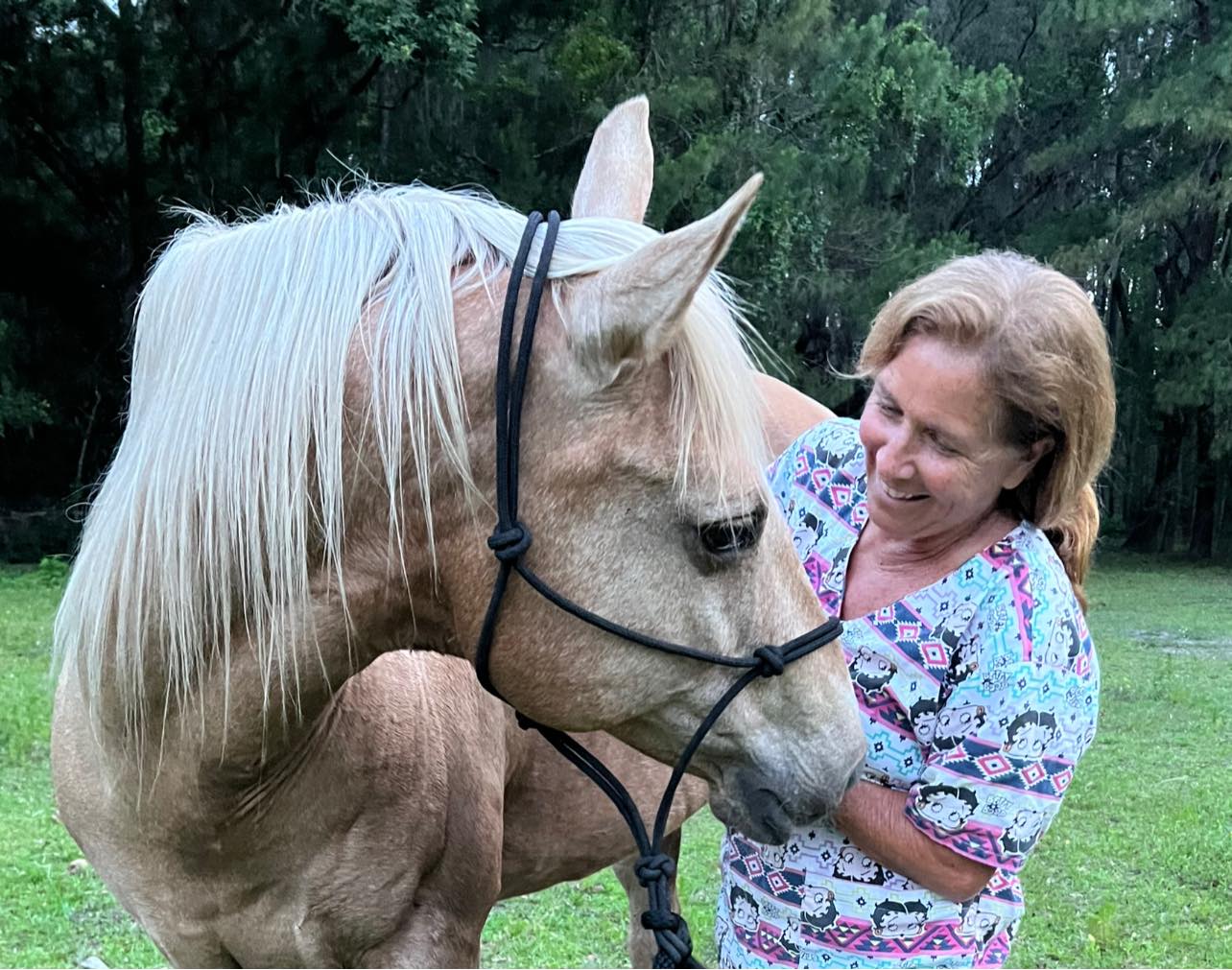Did you know that the triangle shaped soft part of the bottom of the hoof is called a “frog?”
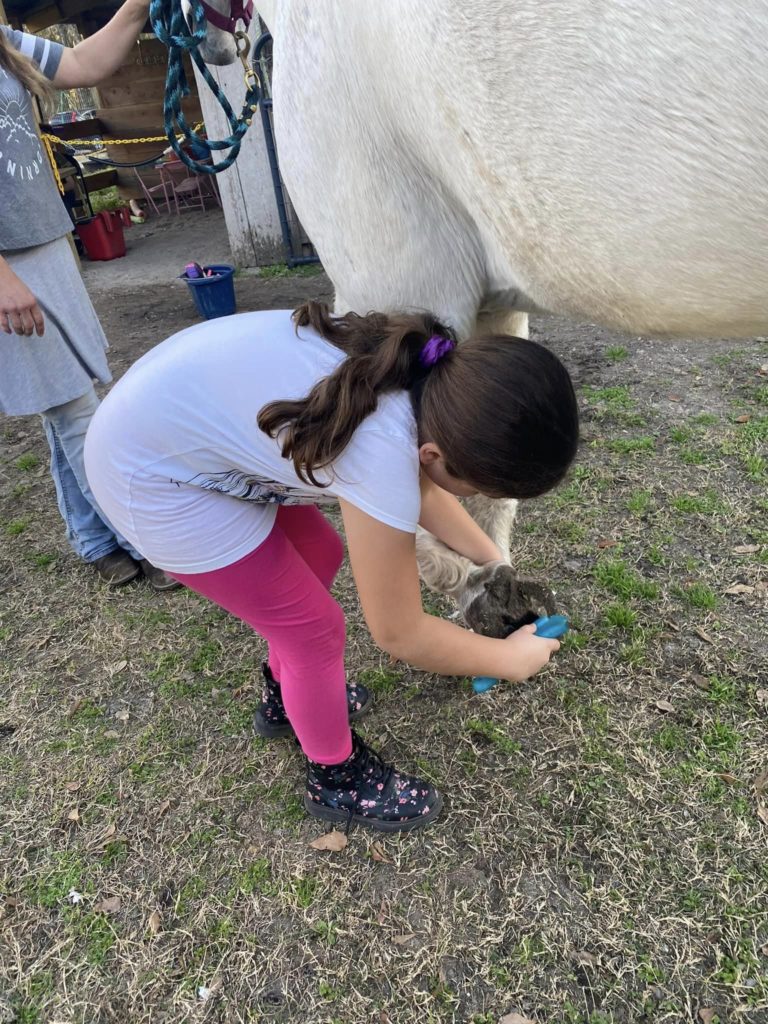
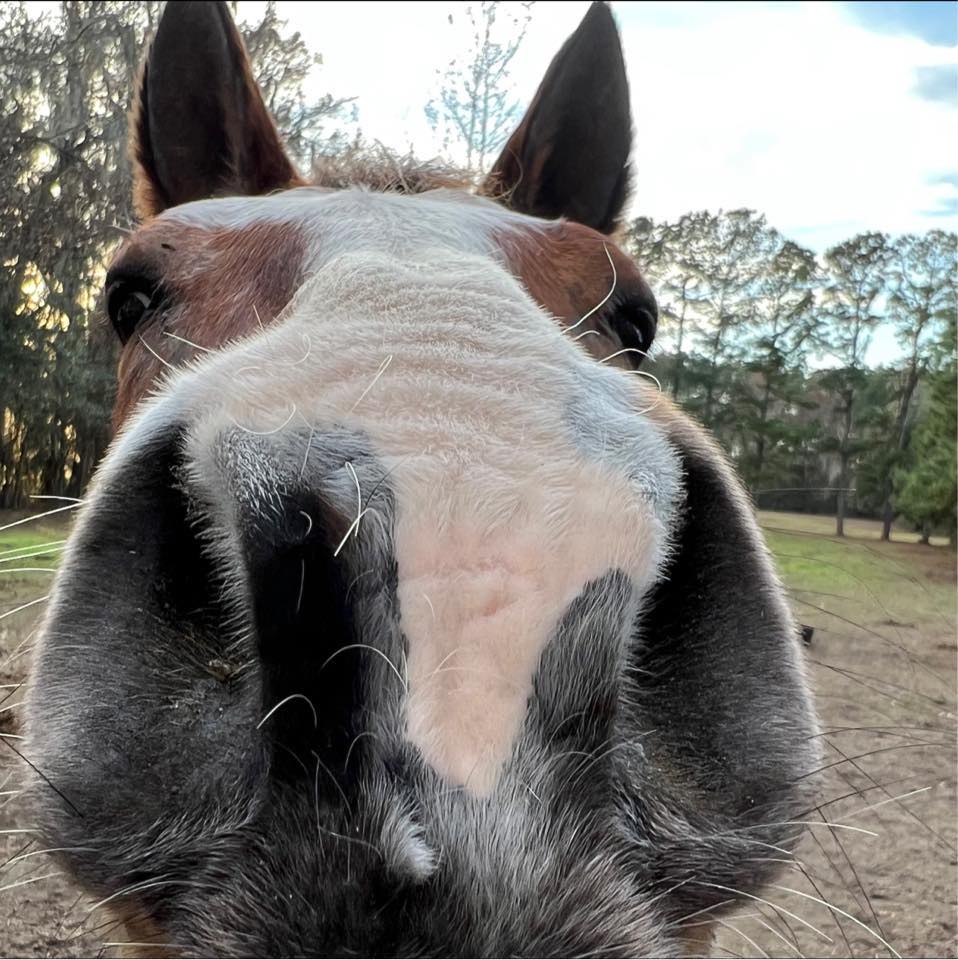
Horses have whiskers?

Yes, horse whiskers, also known as vibrissae, are important sensory hairs that help horses navigate their surroundings and perceive their environment. They are located around the horse’s eyes, muzzle, and chin and are more sensitive to touch than other hairs because they have larger follicles, a richer blood supply, and more nerve connections.
Whiskers help horses in many ways, including:
- Spatial awarenessWhiskers help horses determine safe distances from objects, especially in front of their face and below their nose where they have blind spots. This helps prevent accidents, especially in low-light conditions like at night or in dimly lit barns.
- Finding foodWhiskers help horses locate food, especially in dense vegetation or when grazing in the dark.
- Protecting themselvesWhiskers help protect horses’ eyes and muzzles from harm.
- CommunicatingWhiskers can be used as a form of body language and silent communication. For example, the movement of the whiskers can indicate the horse’s attitude.
Whiskers are also the first hair to form during embryonic development, and foals are born with longer whiskers than adult horses. Whiskers have a growth cycle where they emerge, mature, and then shed naturally to be replaced by new whiskers. Unlike other hairs, whiskers don’t shed seasonally.
Some believe that clipping a horse’s whiskers for cosmetic reasons should be banned to improve the horse’s welfare. Germany, Switzerland, and France have already banned the practice.
The hair on the horse is called the Coat.
Here are some facts about a horse’s coat:
- Protection A horse’s coat protects its skin from the sun, wind, cold, and insects. It also traps air to provide warmth, and produces natural oils to repel water and reflect sunlight.
- Layers A horse’s coat is made up of millions of hairs, each with three layers: a cuticle, cortex, and medulla. The cuticle is the outermost layer, made up of overlapping cells that give the coat a rough, scaly surface. The cortex contains pigmentation, which determines the horse’s coat color. The medulla is in the middle.
- Types of hair Horses have three types of hair: permanent, temporary, and tactile:
- Permanent: Hair on the mane, tail, forelock, eyelashes, and “feathers” on drafts. This hair doesn’t shed like the temporary hair.
- Temporary: The majority of the body hair, which sheds.
- Tactile: Hair on the muzzle, around the eyes, and inside the ears, also called vibrissae. This hair helps horses navigate and feel things around them that they can’t see.
- Growth A horse’s coat changes in three phases: anagen, catagen, and shedding:
- Anagen: Cells in the bulb actively produce the hair shaft.
- Catagen: A transitional period where growth stops and the follicle shrinks.
- Shedding: The pineal gland controls melatonin production at night, which triggers other reactions in the body that cause hair to grow or shed. For example, in the spring, when there are fewer dark hours, the pineal gland secretes less melatonin, causing the horse to shed its winter coat.
Muzzle. The muzzle is the part of the horse’s head that includes the area of the mouth, nostrils, chin, lips, and front of the nose.
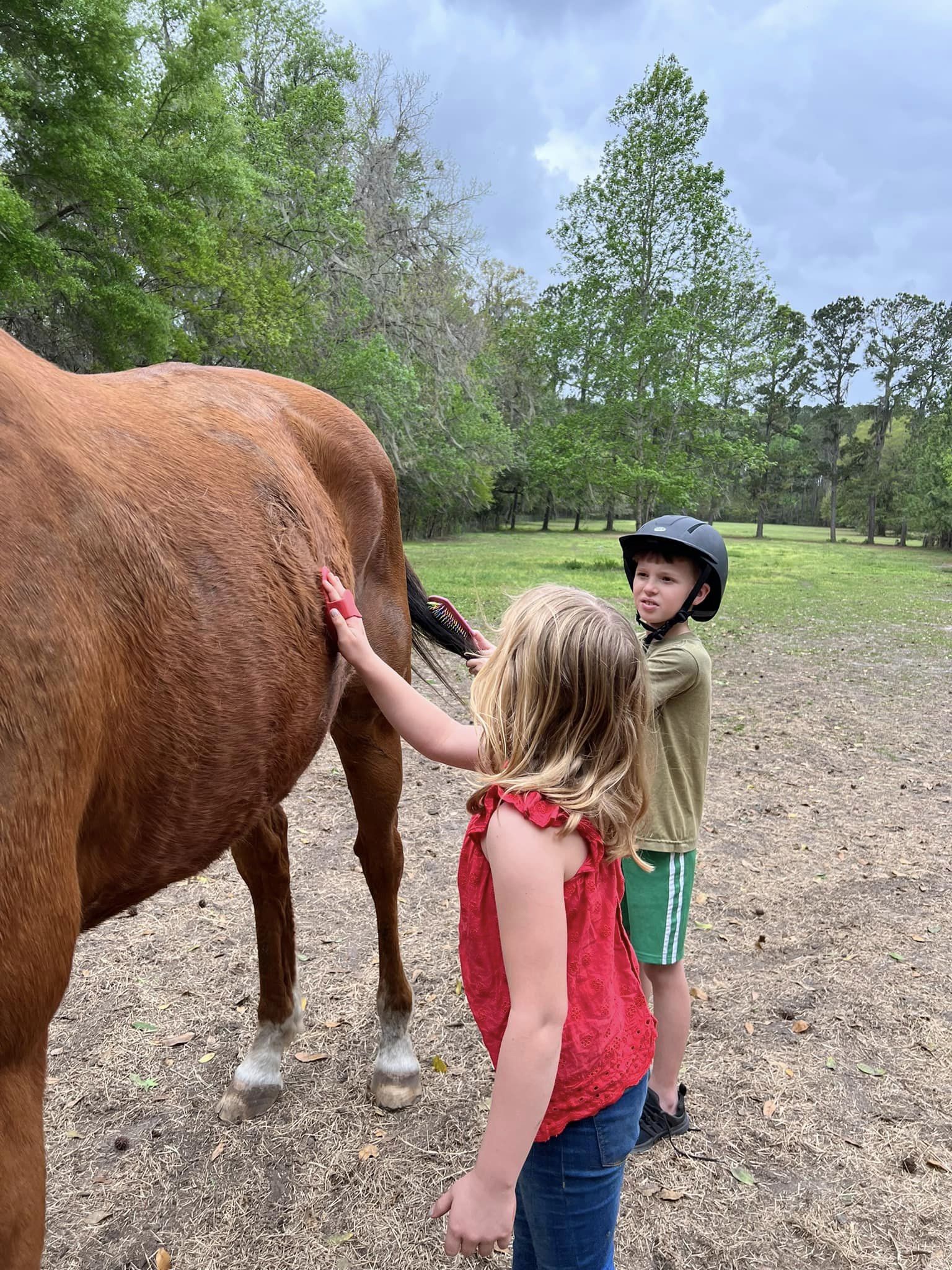
The Coat
Meet our team
We have three instructors to help teach our students horsemanship skills.

Tasha Smith
Founder, Owner
CTRI
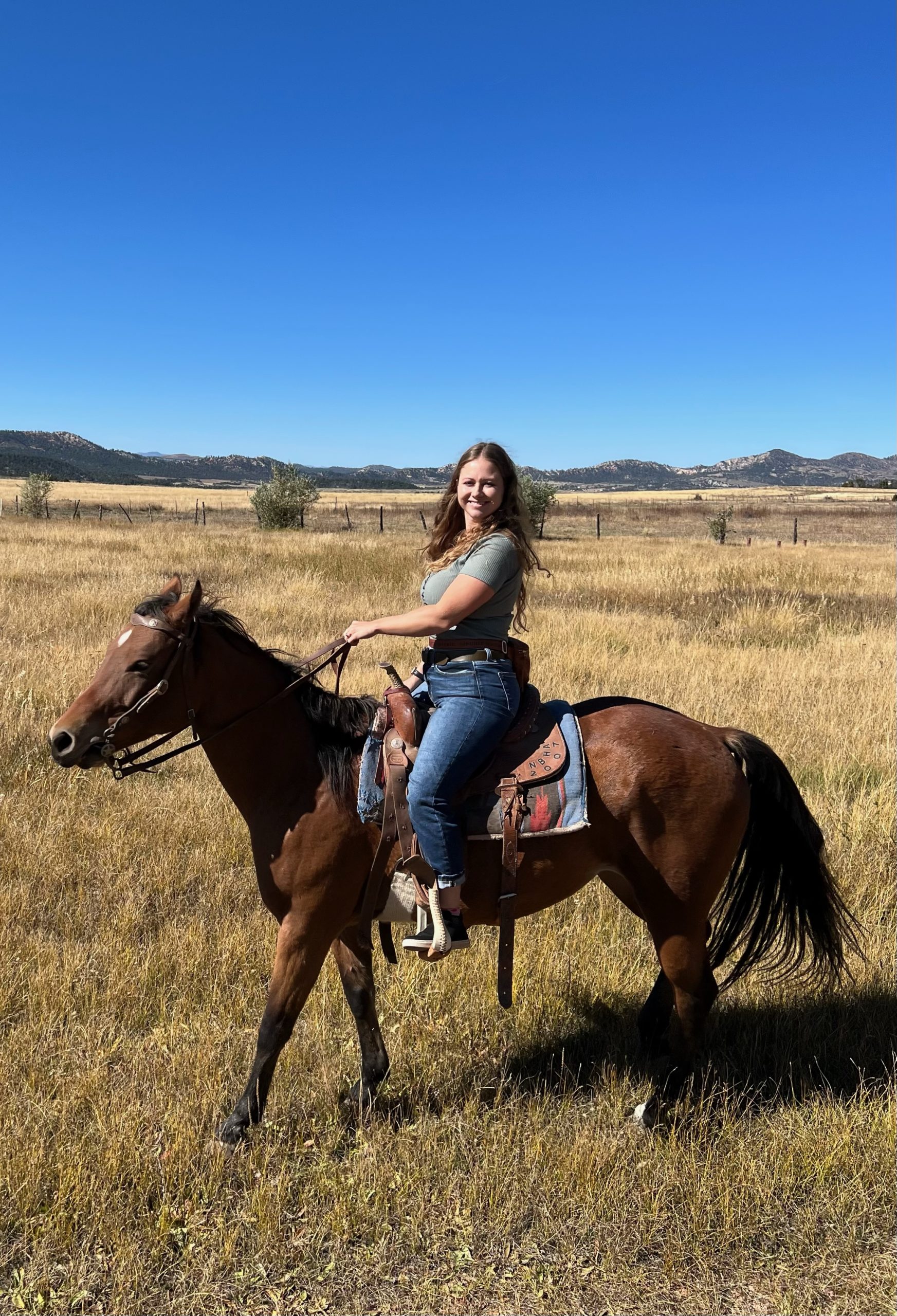
Brianna
Osthed
CTRI
Robert
Sears
Instructor
We’ve worked with some of the best companies.
FAQs
How can therapeutic horsemanship help me or my loved one?
Equine therapy utilizes a horse’s unique traits and sensitivities to help people dealing with a variety of challenges in both emotional and physiological aspects of life. The horse’s position on the therapy team changes depending on the client’s treatment plan, goals and objectives, and can help people heal from trauma, mood disorders, and relationship issues. (https://www.choosingtherapy.com/equine-therapy/)
What Is Equine Therapy?
Equine therapy, also called equine assisted therapy (EAT), equine-facilitated therapy, horse therapy, equestrian therapy, or horse-riding therapy, is a therapeutic modality that utilizes horses to help people deal with physical and psychological challenges. Client, horse and trained horse specialists are able to work together on specific treatment plans using the horse in a number of different ways.
Similar to therapy dogs, horses are sensitive to non-verbal communication and remain mentally and physically prepared to respond to their environment in the present moment. Their overall surroundings dictate their behavior, which directly, or indirectly, alters the therapeutic narrative throughout an EAT session. (https://www.choosingtherapy.com/equine-therapy/)
How Was Equine Therapy Developed?
Equine therapy dates back to ancient Greece, during which time Hippocrates wrote about riding horses as a therapeutic form of exercise. While equine therapy has long been utilized in treating physical illness through therapeutic riding, in more recent years horses have also been utilized in mental health care. While psychoanalyst Wilhelm Reich contributed to the modern use of horses in therapy back in the 20th century, equine therapy for mental health care began to be more widely recognized in the 1990s.1 (https://www.choosingtherapy.com/equine-therapy/)
*Another fun fact… I didn’t even know this!!
Types of Equine Therapy
There are several approaches to equine therapy, including:
Therapeutic Horseback Riding/driving: This is a unique horse therapy approach that includes horseback riding (or Driving) and addresses the physical needs of the client. This style uses a therapeutic team, usually including a certified therapeutic riding instructor, two or more volunteers, and a horse, to help an individual ride a horse and/or work with the horse on the ground.
Equine Assisted Psychotherapy (EAP): This utilizes a mental health professional, an equine specialist, and horses all working together.
Equine Assisted Learning (EAL): This is an experiential learning approach that promotes the development of life skills through equine assisted activities including grooming, feeding, and ground exercises.
Hippotherapy: Hippotherapy is a form of physical, occupational and speech therapy in which a therapist uses the characteristic movements of a horse to provide carefully graded motor and sensory input.2 This involves an occupational therapist, a physiotherapist, or a speech and language therapist working with a client and a horse.3(facts adapted from https://www.choosingtherapy.com/equine-therapy/)
Enhance your horse’s enjoyment and well-being through equine massage therapy.
